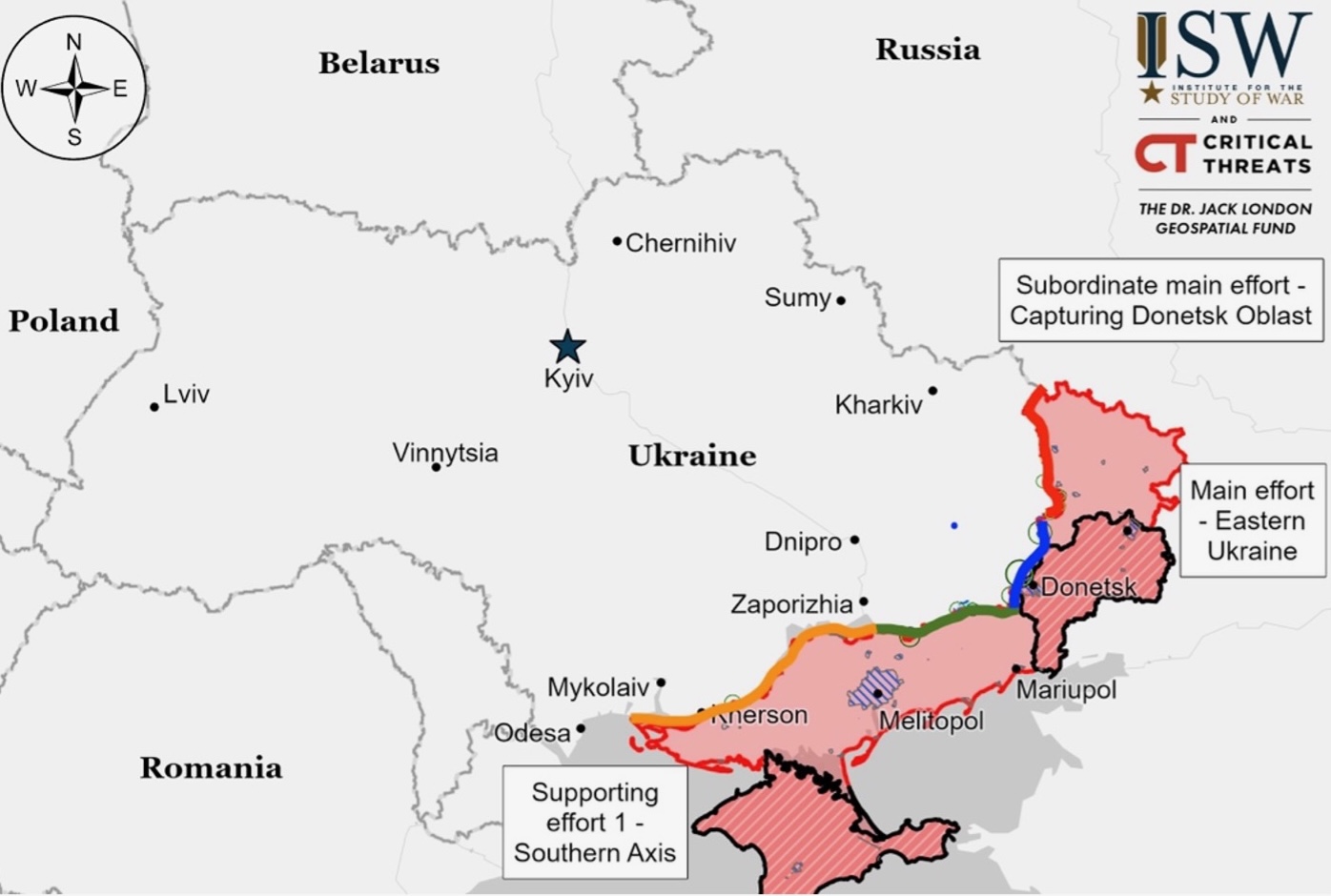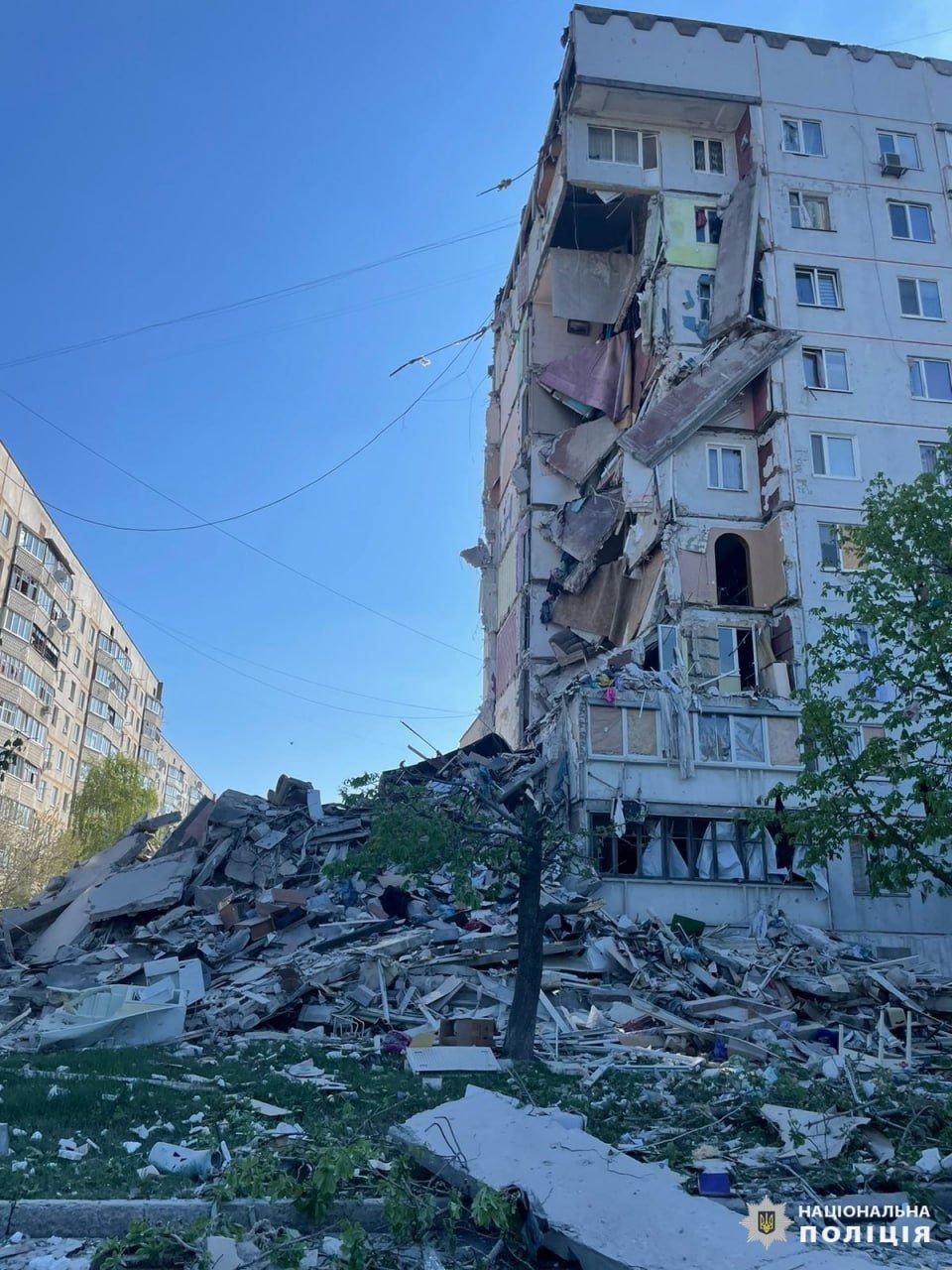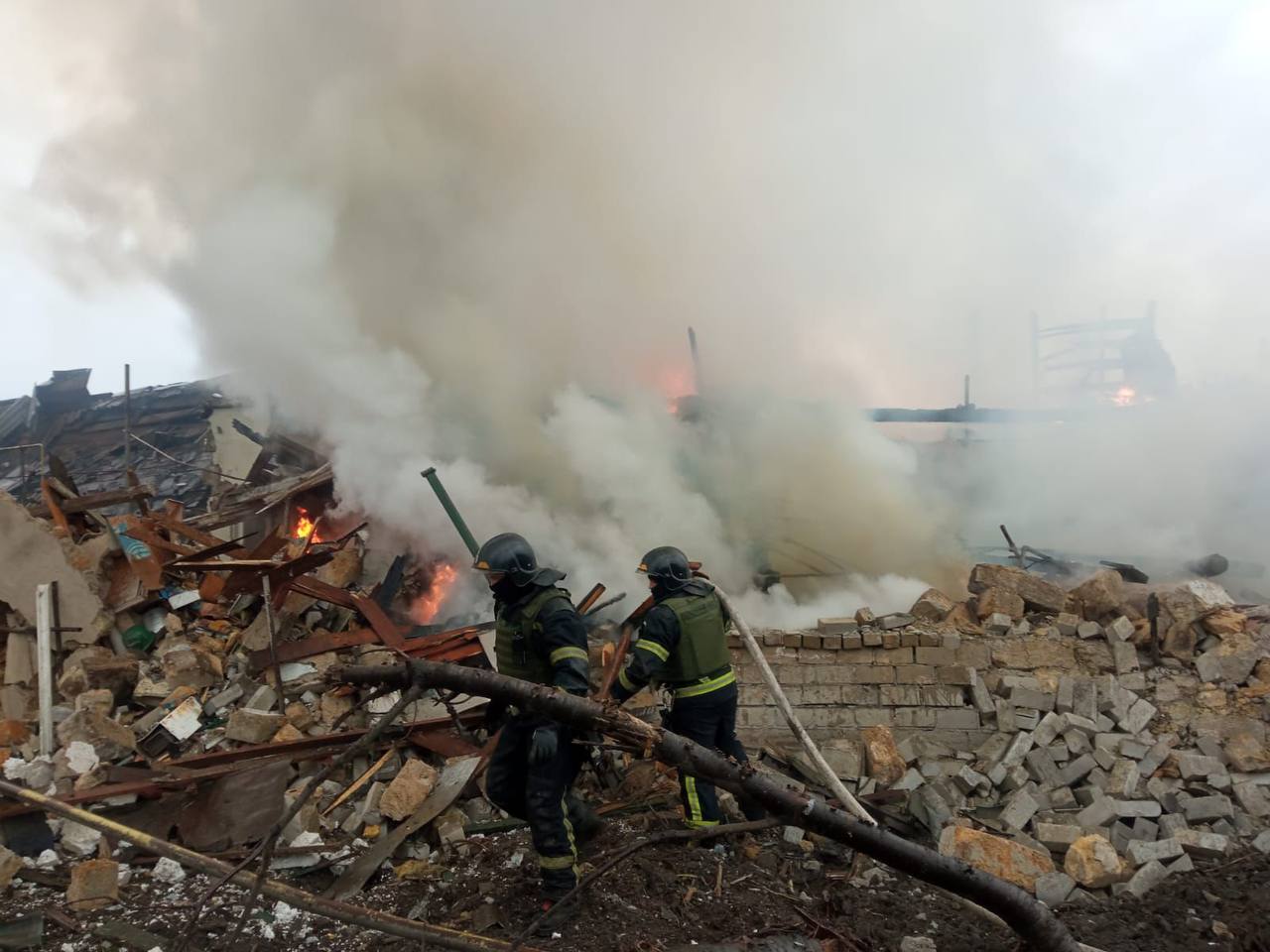Summary of the day: The US House of Representatives has passed a bill to provide approximately $60 billion in assistance to Ukraine, which now awaits Senate approval and presidential signature. Due to logistical and legislative delays, this crucial aid is unlikely to reach Ukrainian forces immediately, potentially leaving a window for intensified Russian attacks. Despite these challenges, Ukraine is expected to stabilize its position by June 2024, which could influence Russian military strategies. In related developments, Ukrainian forces conducted successful drone strikes against Russian infrastructure, while the Kremlin is reportedly censoring dissent and controlling narratives within Russia.
What Can I Do To Help Ukraine? This is a question I receive all the time. We at Transform Ukraine are building longer-term housing for internally displaced Ukrainians. Visit Rebuild Ukraine for how you can assist in housing a Ukrainian family displaced by the war.
Situation On The Land, Sea, and Air in Ukraine
Russian forces are expected to intensify their offensive operations, missile, and drone strikes in the upcoming weeks, aiming to take advantage of the current gaps in Ukrainian defenses before Western aid strengthens these positions. The goal is to capitalize on Ukraine’s weakened air defense and infrastructure, particularly targeting the energy grid to potentially trigger a humanitarian crisis. Additionally, Russian military efforts might include disrupting Ukrainian transportation to hinder the distribution of manpower and resources along critical front sectors. Despite these intensified efforts, Russian advances in the past six months have only yielded limited tactical gains, with no significant breakthroughs likely. The strategy may also involve focusing attacks on unstable sectors of the Ukrainian front, such as west of Avdiivka and near Chasiv Yar, to achieve operationally significant objectives before Ukrainian defenses are bolstered.
By June 2024, Ukraine is expected to be in a much stronger operational position despite potential delays in receiving US security assistance. Ukrainian forces are preparing to counter a likely Russian summer offensive, anticipated to focus on seizing more of Donetsk and Luhansk oblasts, and possibly Kharkiv City. Russian military planners have been operating under the assumption that their forces could succeed against a Ukrainian military struggling with shortages in artillery and air defense munitions. However, Ukrainian efforts to replenish and rotate troops are expected to bolster their defensive capabilities. As Ukraine’s situation improves, Russia may need to reassess its strategy and objectives for the summer, considering the increased support Ukraine is receiving from the US. This shift could impact the feasibility of Russia’s planned large-scale operations.
The resumption of US security assistance to Ukraine marks a pivotal moment in the ongoing conflict, influencing future strategies and outcomes. Key decisions by the Kremlin, Western nations, and Ukraine will shape the war’s progression. Russia may intensify its mobilization efforts despite potential domestic opposition, while Ukraine continues to navigate significant military and industrial challenges. For US aid to be impactful, Western nations must ensure consistent and timely delivery of critical systems to Ukrainian forces.

Luhansk Front – Initiative None
Donetsk Front – Initiative Russia
Zaporizhia Front – Initiative Russia
Kherson (Dnipro River) Front – Initiative None
Ukrainian forces have made recent advances south of Kreminna, engaging in positional battles along the Svatove-Kreminna line. Geolocated footage confirms movements northeast of Bilohorivka, close to Kreminna. Clashes were also reported near several other locations southwest of Svatove and around Kreminna, including Yampolivka, Terny, and Torske. Additionally, Chechen special forces are reportedly active in the Serebryanske forest area south of Kreminna.
In the Siversk area northeast of Bakhmut, positional battles continued with no significant changes to the frontline. Ukrainian forces repelled Russian attacks near Verkhnokamyanske and Spirne.
Russian forces made slight advances near Chasiv Yar, particularly along the T0504 highway northwest of Ivanivske. Additional claims of progress in eastern Chasiv Yar have not been visually confirmed. The area around Chasiv Yar, including Bohdanivka, Ivanivske, Klishchiivka, and Pivdenne, continues to see heavy fighting with Russian airstrikes reported. Ukrainian forces recently targeted a Russian command post in central Bakhmut.
Russian forces have made marginal tactical gains northwest of Avdiivka, particularly near Ocheretyne, where they have advanced along a railway line and established a small foothold. Geolocated footage shows Russian movement in southeastern Ocheretyne. Concurrently, Russian assaults have intensified in the area, with a shift of artillery and infantry from other sectors near Avdiivka, suggesting a focused effort to breach Ukrainian defenses at Ocheretyne. Meanwhile, Russian activity in other nearby areas such as Berdychi and Umanske has decreased, while heavy assaults continue near Semenivka. Despite various Russian claims of control and advances in surrounding areas like Semenivka, Novokalynove, and Novobakhmutivka, visual confirmation of these positions remains unverified. Fighting persists in multiple locations around Avdiivka as both sides continue to maneuver and engage.
Russian forces reported advancements west of Donetsk City, particularly southeast of Heorhiivka, though these claims lack visual confirmation. The frontline remains unchanged despite ongoing positional battles near Krasnohorivka, Heorhiivka, and further southwest near Novomykhailivka, Pobieda, and Vodyane. Russian aircraft have reportedly been active, using guided glide bombs against Ukrainian positions in Krasnohorivka and Novomykhailivka.
Positional battles persisted in the Donetsk-Zaporizhia Oblast border area, specifically south of Velyka Novosilka near Staromayorske and Urozhaine, with no changes to the frontline reported.
Ongoing positional engagements occurred in western Zaporizhia Oblast, near Robotyne and northwest of Verbove, with no confirmed changes to the frontline reported in these areas.
There was ongoing positional fighting on the east bank of Kherson Oblast, specifically near Krynky and the Antonivsky roadway bridge north of Oleshky, with no changes reported to the frontline in this area.
Ukrainian Victims Of War
In the past 24 hours, Russian attacks on civilian targets resulted in the deaths of 3 people and the injuries of 11 others:
- A Russian attack in the Dnipro district of Dnipropetrovsk Oblast resulted in the death of a 54-year-old man and caused a fire, which emergency services have extinguished.
- Russia’s assault on Vovchansk in Kharkiv Oblast resulted in the deaths of two men and injuries to a man and a woman. The city, close to the front line and the Russian border, was hit early morning, including a nine-story building and a house.
- A missile strike by Russian forces on a residential area in Odesa injured eight people, including two children and an elderly woman. The attack, part of ongoing assaults on Ukraine’s southern regions, caused fires and destroyed homes.
- Russian forces launched 54 attacks on 13 communities in Sumy Oblast, causing 283 explosions in 24 hours. One civilian was injured, and various communities experienced mortar, artillery, and drone strikes, with Velyka Pysarivka on the border facing the majority of the attacks.
 The aftermath of Russian attack on Vovchansk
The aftermath of Russian attack on Vovchansk
 First responders are working on the scene of a Russian missile attack on Odesa
First responders are working on the scene of a Russian missile attack on Odesa
Ukraine News
Russian forces launched a series of missile strikes against Ukraine. They fired three Iskander-M ballistic missiles and two S-300/400 missiles from Belgorod Oblast, along with two Kh-59/69 cruise missiles from aircraft over the Black Sea, which Ukrainian forces intercepted and destroyed over southern Ukraine. The attacks targeted infrastructure in the cities of Zaporizhzhia and Odesa.
Ukraine’s Allies
The U.S. House of Representatives passed a $60.84 billion foreign aid package to support Ukraine. Although the aid awaits Senate and Presidential approval, the immediate effect on Ukraine’s frontline is not expected for weeks, potentially offering tactical advantages to Russia. US officials plan to expedite essential items like artillery shells and air defense missiles from European stocks to bridge the gap. Despite this, shortages in Ukrainian artillery and air defenses may continue, affecting Ukraine’s defensive capabilities in the short term. The bipartisan approval also underlines partisan divisions, evidenced by the significant opposition from Republican lawmakers.
The U.S. House passed a bill to seize and repurpose frozen Russian assets for Ukraine’s defense and recovery. The legislation, which also includes sanctions on Iran and a possible TikTok ban, complements a nearly $61 billion aid package for Ukraine. Awaiting Senate approval and President Biden’s signature, the bill reflects efforts to redirect $5 billion of Russian assets in the U.S. towards assisting Ukraine. This move aligns with the recent PACE resolution supporting the use of frozen Russian assets for Ukraine’s reconstruction.
Michael Wiggers Hyldgaard, the new Danish Armed Forces Commander-in-Chief, met with Ukrainian officials in Kyiv to discuss continued Danish support and Ukraine’s frontline needs. Denmark has consistently supported Ukraine since the invasion began, providing multiple aid packages including a recent $313 million military aid package, making Denmark one of Ukraine’s largest military aid donors.
Russia News
Ukrainian forces executed a major overnight drone strike against Russian energy infrastructure, hitting targets including substations and a fuel storage facility in eight regions such as Moscow and Bryansk. This strategic move, aimed at disrupting Russian military supplies, led to Russian air defenses downing 50 drones. Confirmed damages in Bryansk, Kaluga, and Smolensk oblasts are part of Ukraine’s wider asymmetric warfare campaign. While Ukraine’s security services and military were involved, official comments on such operations within Russia are uncommon. Despite U.S. concerns about the global energy market, President Zelensky asserts Ukraine’s right to self-defense through these strikes.
The Kremlin is reportedly suppressing demands for an investigation into the murder of Russell Bonner Bentley III, a former Donetsk People’s Republic (DNR) serviceman and US national, amid broader efforts to control or censor DNR-affiliated voices. Bentley, thought to have been mistaken for a Ukrainian spy due to his accent, was allegedly detained and killed by elements of the Russian 5th Tank Brigade. His death was confirmed by a prominent Russian propagandist and calls for an investigation by DNR officials have been stifled, with reports of government pressure leading to the removal of public demands for justice. This incident is part of a larger pattern of the Kremlin targeting dissenting or critical voices within DNR and Luhansk People’s Republic (LNR) circles, including arrests and the suppression of critical commentary on Russian military operations. The situation underscores ongoing tension and censorship efforts by Russian authorities concerning its proxy forces and affiliated commentators in the conflict with Ukraine.
Russian Mobilization and Defense Industrial Base
Ukrainian and Russian sources report that Russian forces are using US-made 203mm artillery ammunition, likely obtained from Iran, in their 2S7 “Pion” artillery guns. The ammunition, originally supplied to Iran by the United States in the 1970s, may have been reverse-engineered by Iran. Russia has reportedly renamed these shells “Izdeliye 203.”
Russian Defense Minister Sergei Shoigu inspected modernized drones at a training ground in the Moscow Military District. He reviewed drones with payloads ranging from 10 to 200 kilograms, all made from domestically produced materials. Among the drones was a model designed to withstand jamming, with production capabilities of 30 units per month. Shoigu announced plans for the Russian Ministry of Defense to establish a research and production center dedicated to drones and robotic systems.
Russian Narratives and Propaganda
Following the US House of Representatives’ approval of a $60 billion aid package for Ukraine, Russian officials are expected to ramp up information operations aimed at undermining US and Western support for Ukraine. These operations are likely to promote narratives that discourage Western military aid by emphasizing the risks of nuclear escalation and suggesting false willingness for peace negotiations. Such tactics have been used previously by Russia to delay Western military supplies to Ukraine and to foster self-deterrence among Western nations.
Source Materials
Institute for the Study of War – understandingwar.org
The Kyiv Independent – kyivindependent.com
Kyiv Post – kyivpost.com
